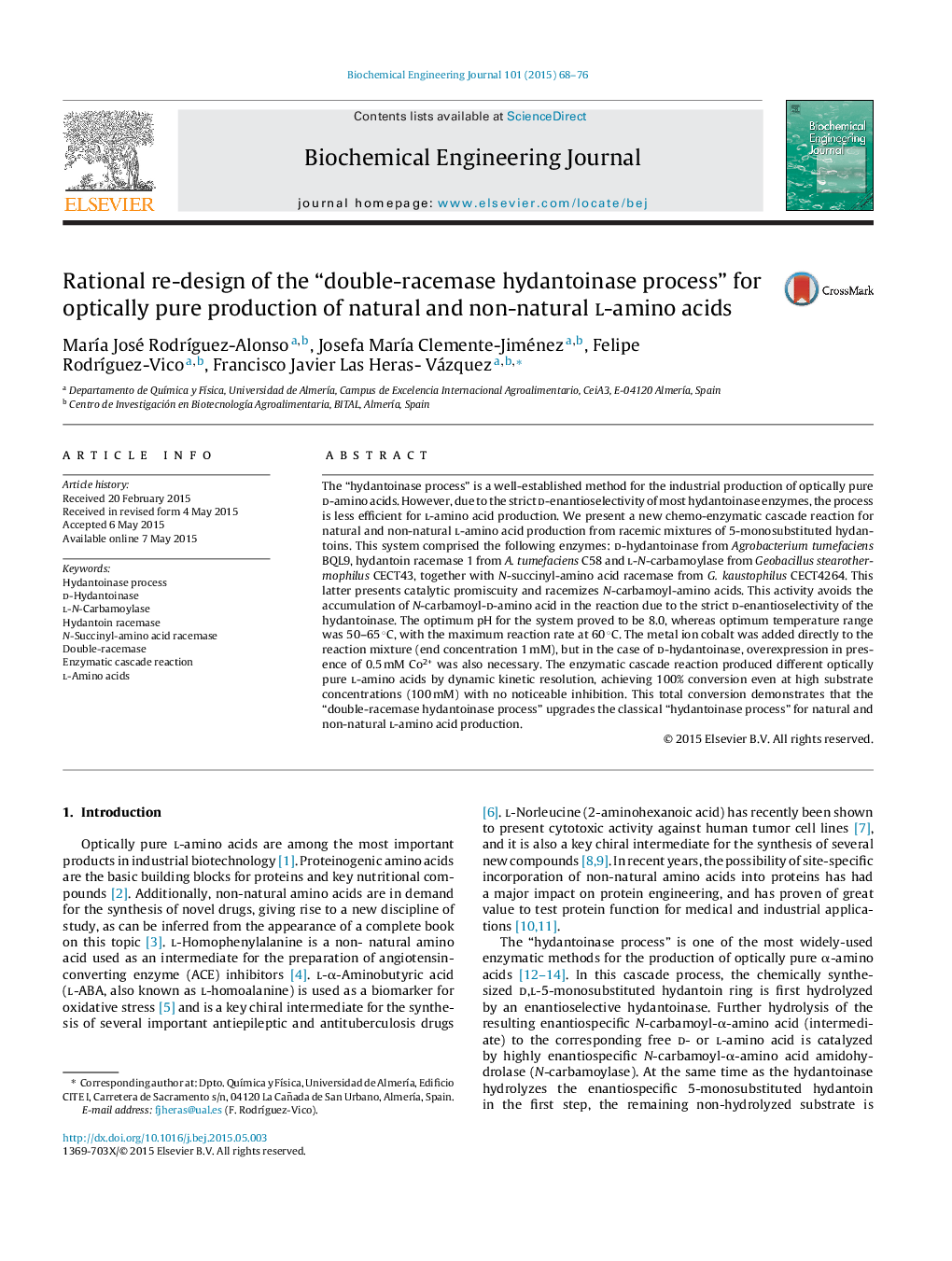| Article ID | Journal | Published Year | Pages | File Type |
|---|---|---|---|---|
| 2842 | Biochemical Engineering Journal | 2015 | 9 Pages |
•Double-racemase hydantoinase process for optically pure l-amino acid production.•NSAAR as N-carbamoyl-amino acid racemase, avoids intermediate accumulation.•The cascade reaction allows yields of over 95% with 100% enantiomeric excess.•The system proved to be efficient at substrate concentrations up to 0.1 M.
The “hydantoinase process” is a well-established method for the industrial production of optically pure d-amino acids. However, due to the strict d-enantioselectivity of most hydantoinase enzymes, the process is less efficient for l-amino acid production. We present a new chemo-enzymatic cascade reaction for natural and non-natural l-amino acid production from racemic mixtures of 5-monosubstituted hydantoins. This system comprised the following enzymes: d-hydantoinase from Agrobacterium tumefaciens BQL9, hydantoin racemase 1 from A. tumefaciens C58 and l-N-carbamoylase from Geobacillus stearothermophilus CECT43, together with N-succinyl-amino acid racemase from G. kaustophilus CECT4264. This latter presents catalytic promiscuity and racemizes N-carbamoyl-amino acids. This activity avoids the accumulation of N-carbamoyl-d-amino acid in the reaction due to the strict d-enantioselectivity of the hydantoinase. The optimum pH for the system proved to be 8.0, whereas optimum temperature range was 50–65 °C, with the maximum reaction rate at 60 °C. The metal ion cobalt was added directly to the reaction mixture (end concentration 1 mM), but in the case of d-hydantoinase, overexpression in presence of 0.5 mM Co2+ was also necessary. The enzymatic cascade reaction produced different optically pure l-amino acids by dynamic kinetic resolution, achieving 100% conversion even at high substrate concentrations (100 mM) with no noticeable inhibition. This total conversion demonstrates that the “double-racemase hydantoinase process” upgrades the classical “hydantoinase process” for natural and non-natural l-amino acid production.
